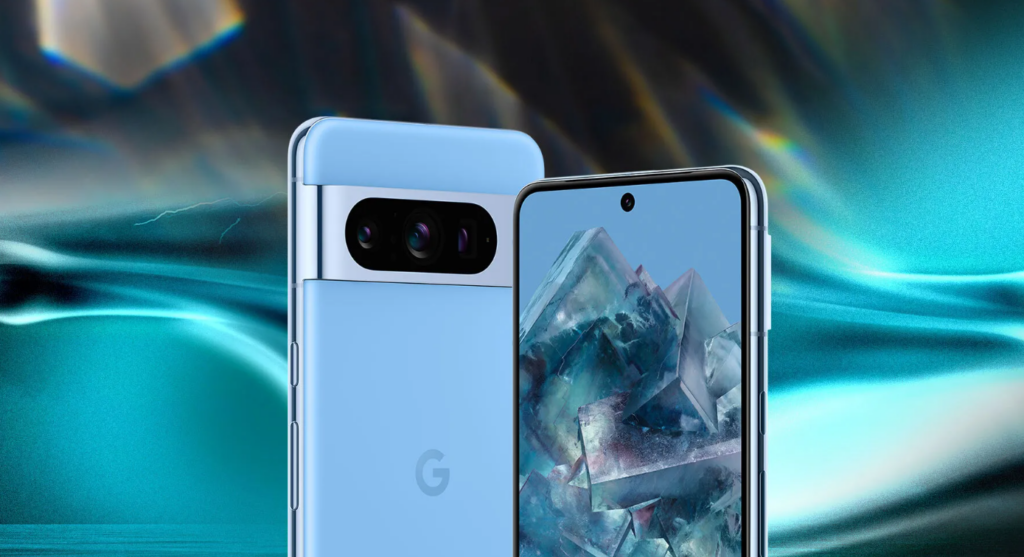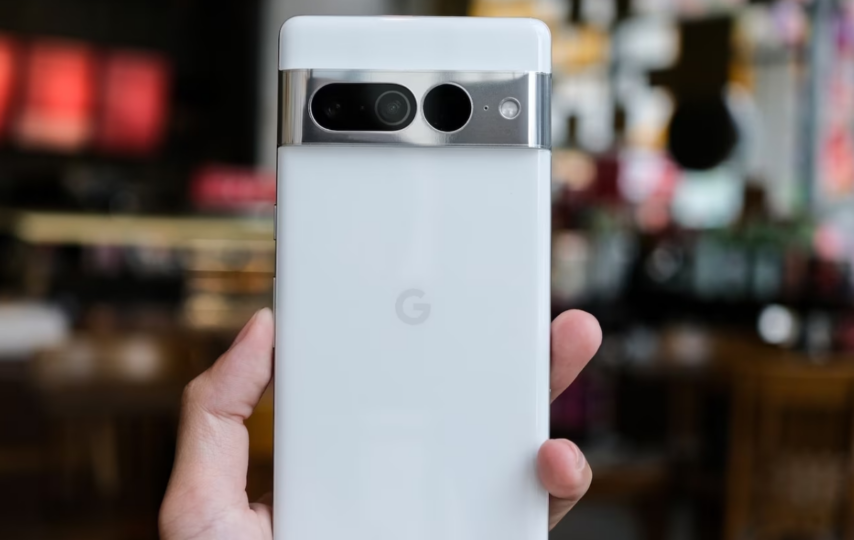Google’s Pixel 8 Pro introduces a textured surface for better grip, enhanced processing power, improved thermal efficiency, and the inclusion of a novel temperature sensor. The renowned camera prowess that has been a hallmark of the Pixel lineage receives a significant boost in the Pixel 8 Pro. It is notably amplified by new AI functionalities.
Marking a significant milestone, Google has set the price of the Pixel 8 Pro at ₹1,06,999, crossing the ₹1 lakh mark for the first time. This price applies to the singular variant available with 12GB RAM and 128GB storage. This pricing decision will likely factor into buyers’ considerations. This is especially true with competitors such as the Samsung Galaxy S23 and Apple iPhone 15 also vying for attention. However, in terms of overall competitiveness, Google faces a substantial challenge in catching up. This is particularly the case in devising effective market strategies for its hardware business in India.
Google’s Pixel 8 Pro Uses AI in Novel Ways

In 2023, the spotlight has shone on ChatGPT, Bard, and the wider realm of AI. This marks them as significant global concerns. Amid this, it’s easy to overlook the fact that smartphones have been employing similar technology for about a decade now. Examining this year’s flagship smartphones, tech manufacturers generally align with two distinct approaches that might soon pose an existential dilemma. The iPhone 15 focuses on optimizing fidelity. It enables users to swiftly capture the most precise and accurate photos with a simple point-and-shoot mechanism. On the other hand, Google’s Pixel 8 Pro takes an entirely different approach, engaging in a unique game altogether.
Features
The Pixel 8 Pro boasts a triple-lens camera loaded with Google’s newest photographic technology. It includes a 5x optical zoom and an improved primary lens for enhanced low-light photography with reduced blurring. Note that it centers solely on its hardware would neglect a significant portion of the narrative. This year, Google’s Pixel 8 phones introduced two major new AI camera features.
One of these is ‘Best Take’, a remarkable innovation particularly useful for group photos. Think of those moments during family gatherings like Christmas. At those times, everyone is squeezed into a frame and not everyone is camera-ready. Instead of capturing just one shot, ‘Best Take’ captures a sequence of photos in quick succession. It enables editing for each individual within the frame, ensuring that everyone looks their best. The outcome? A photo that everyone will be happy to share on their Insta Stories.
A highly remarkable feature is the Magic Editor. It enables users to choose, resize, and creatively alter portions of an image using generative AI. This feature is significantly data-intensive, requiring processing in the cloud by Google before returning the edited image to your phone. However, it represents a significant leap in the direction of AI-driven photography. It allows for revisiting a photo and crafting it to align with the envisioned image, rather than settling for the initial shot taken.
How AI is Revolutionizing Photography
In essence, these functionalities represent an expansion of what professional photo editors have long been capable of achieving. The significant shift with AI’s introduction is the reduced expertise needed to make these adjustments. AI has also increased the extent to which you can transform an image from its original state. When Adobe introduced a beta version of its new Firefly AI tools for Photoshop in May, one example provided was the use of ‘Generative Fill’ to incorporate an entirely new lighthouse into a seaside illustration.
A mere four months later, Firefly has been officially released across Adobe’s most widely used products. However, the potential risk associated with these user-friendly AI tools is the challenge of distinguishing between what is genuine and what isn’t in the final output. This distinction is less critical when refining a selfie from a festival or a group picture at a location like the Pantheon. Yet, it becomes a far more significant concern when deep fake videos portray individuals such as Joe Biden or Keir Starmer saying things that never occurred in reality.
However, reflecting on the issue Samsung faced earlier in the year concerning fabricated ‘Space Zoom’ moon photos, it’s becoming more crucial for users to comprehend the process behind the creation of a picture. Google, in response, is implementing certain limitations. For example, the ‘Best Take’ feature allows editing only for photos captured within a 10-second duration. Additionally, any image generated by AI includes a note about this fact in its metadata.
Final Words
After spending a month with the Google Pixel 8 Pro, one clear observation stands out. The AI camera features mark the initiation of a new phase in smartphone photography. This marks a shift from mere advancements in optical zoom and low-light performance to a novel realm focused on fostering creativity. Regarding what the future holds, a glance at the recent introduction of Google’s generative images engine provides a glimpse of the direction in which things are progressing.








